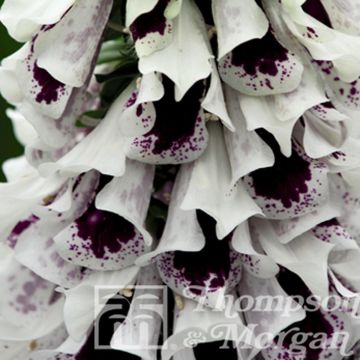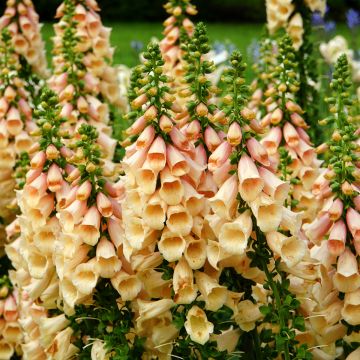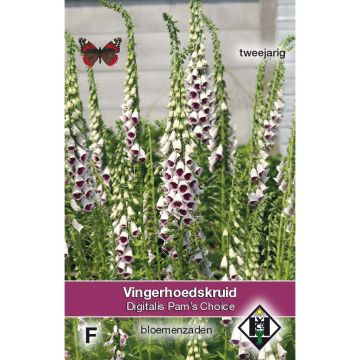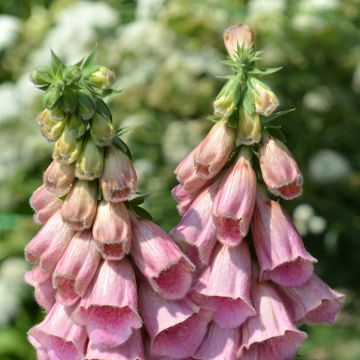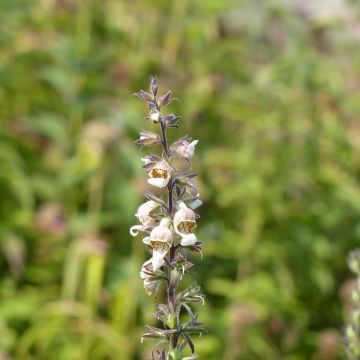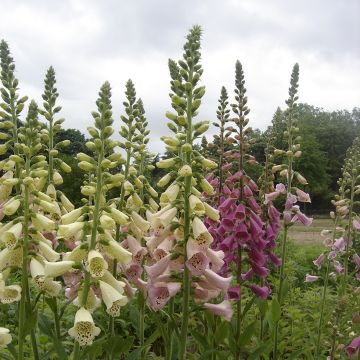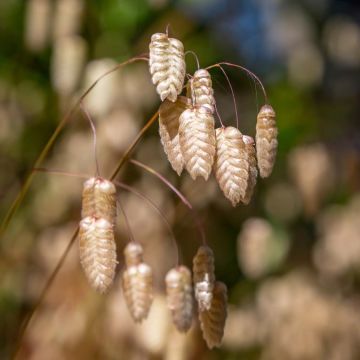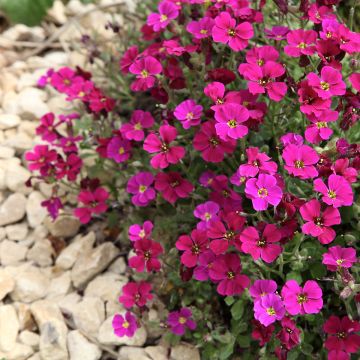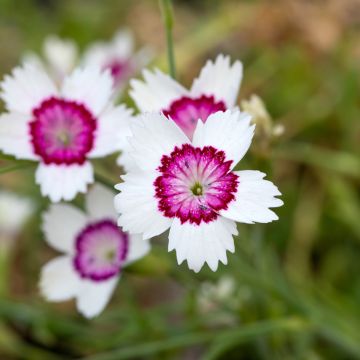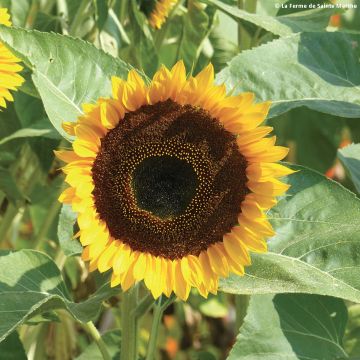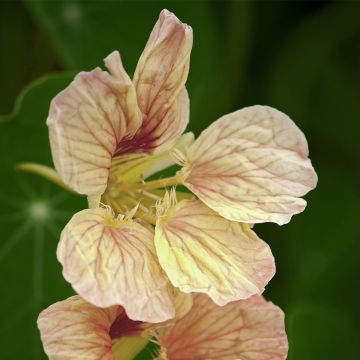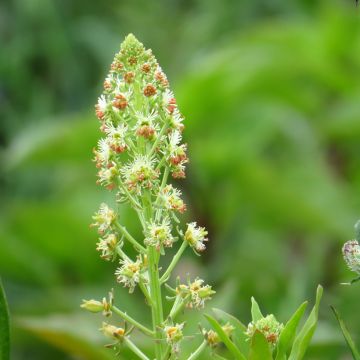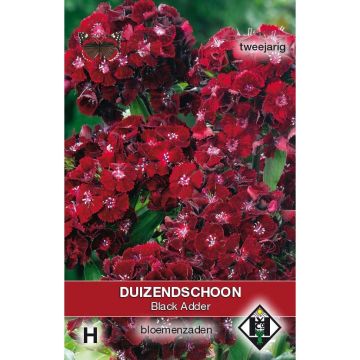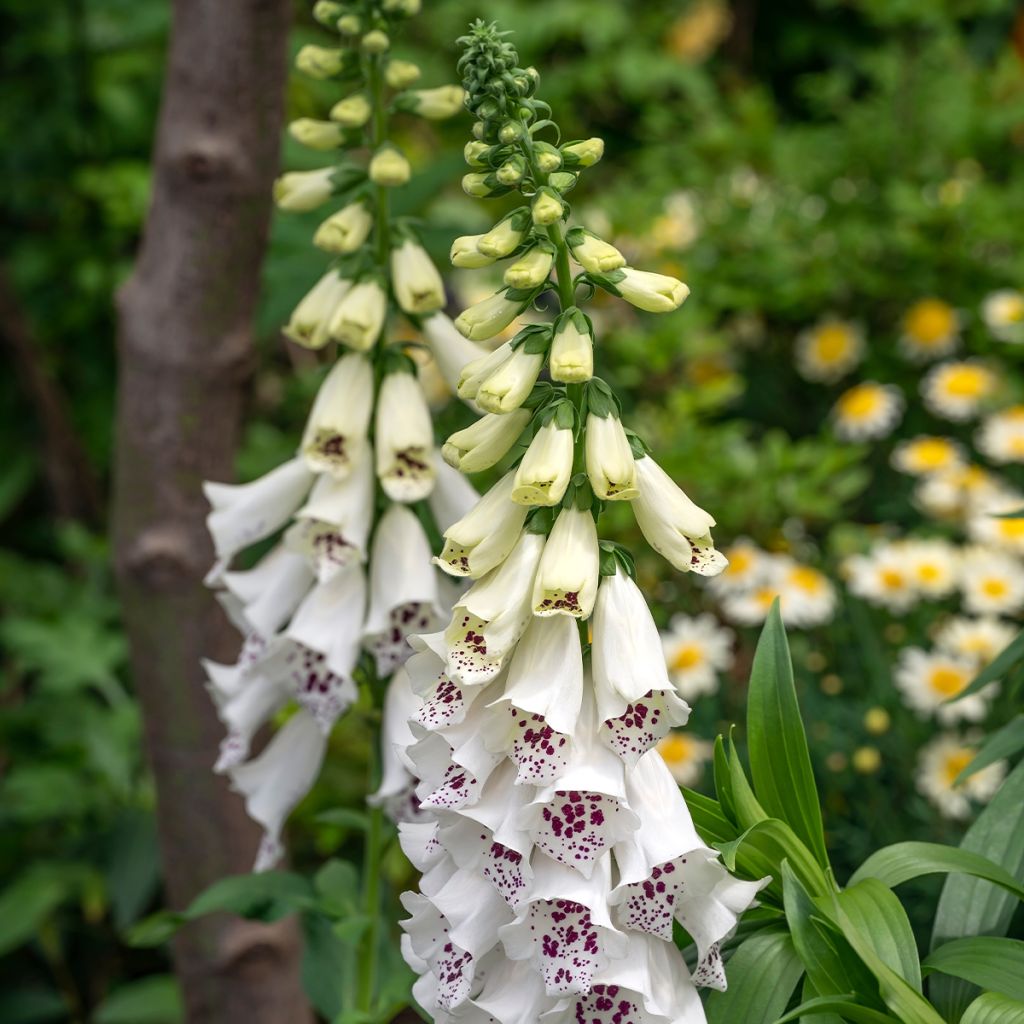

Digitalis purpurea Dalmatian White F1 - Foxglove
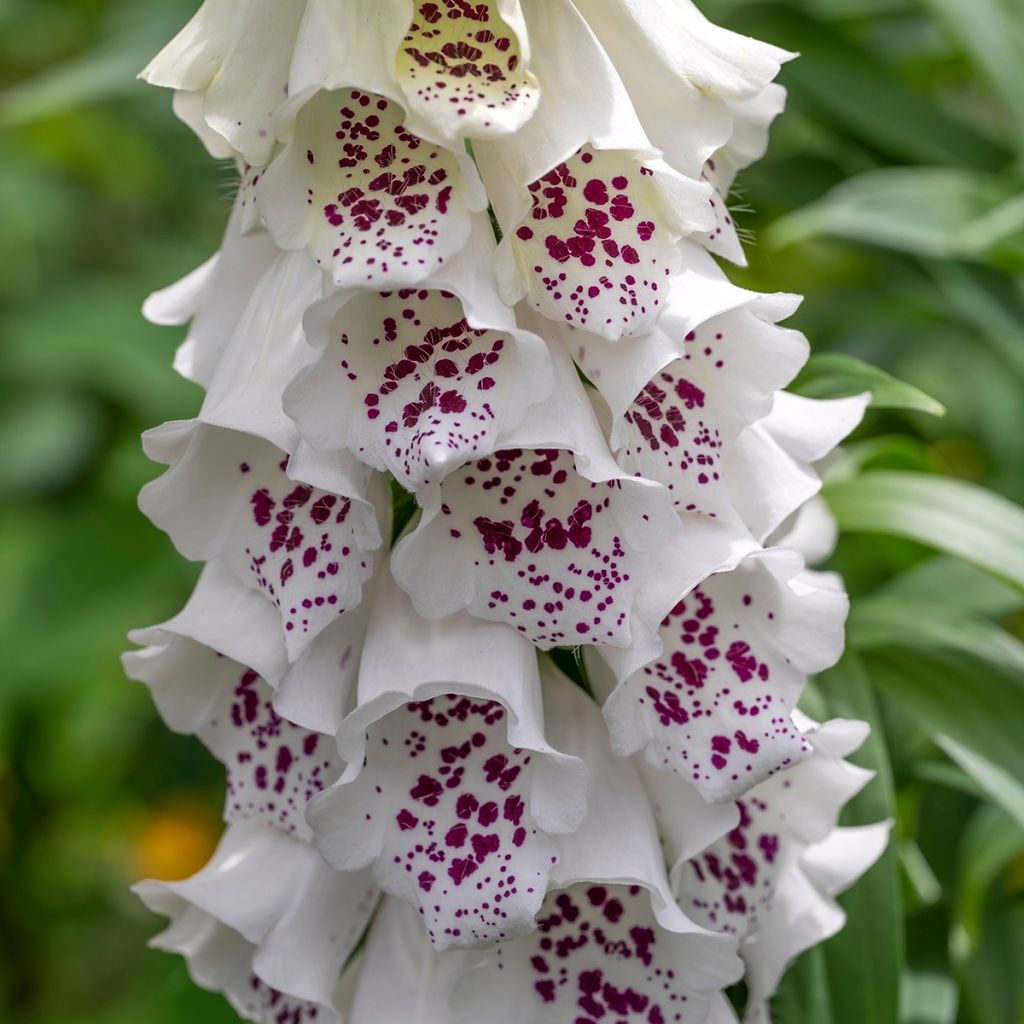

Digitalis purpurea Dalmatian White F1 - Foxglove
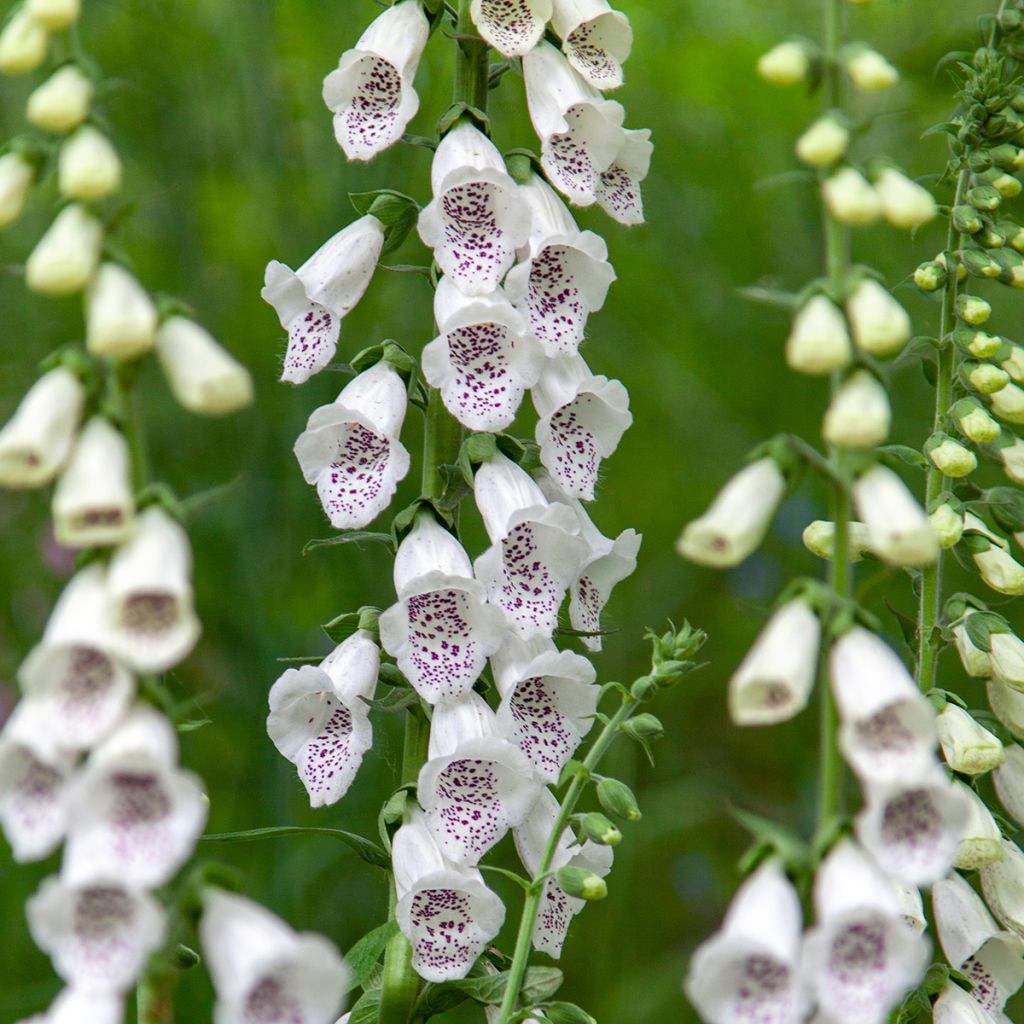

Digitalis purpurea Dalmatian White F1 - Foxglove
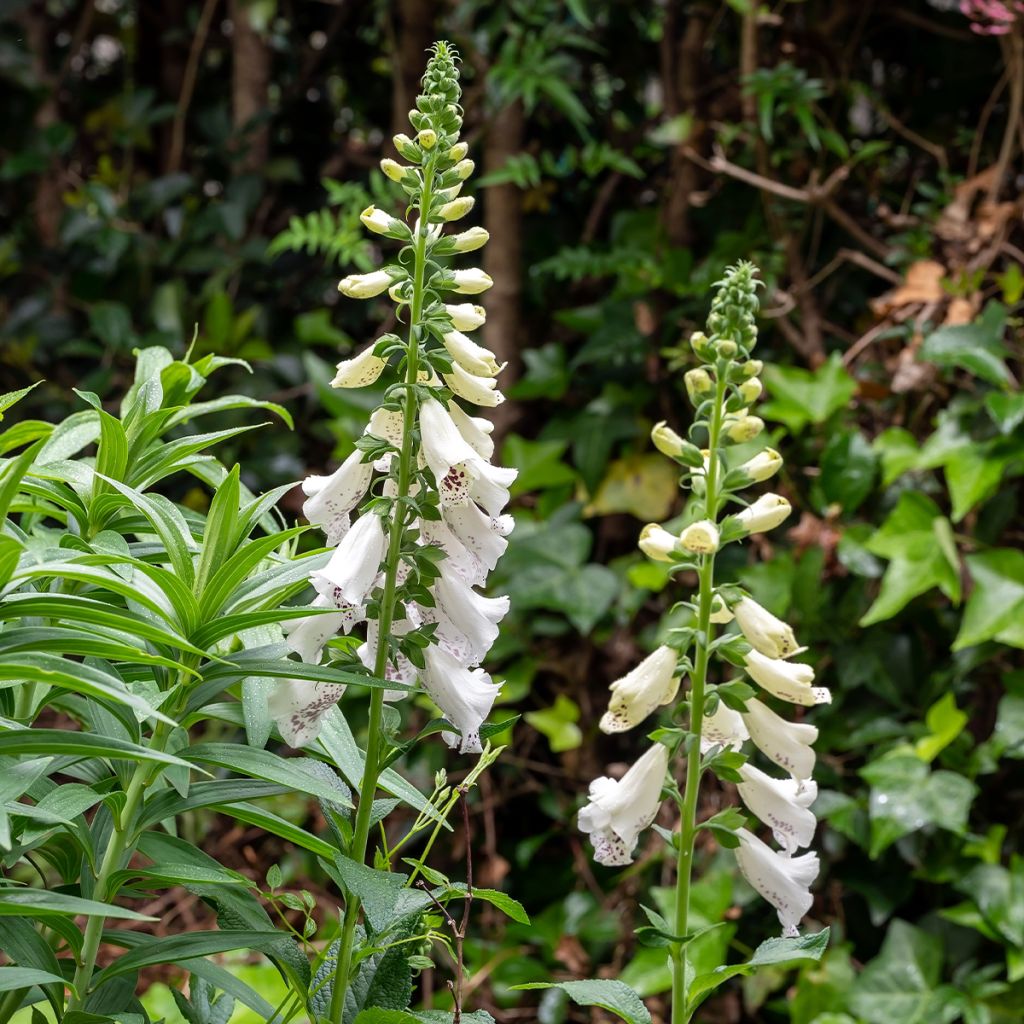

Digitalis purpurea Dalmatian White F1 - Foxglove
Digitalis purpurea Dalmatian White F1 - Foxglove
Digitalis x purpurea Dalmatian White F1
Foxglove
Missing from the shipment!
Daniel , 23/10/2023
This item cannot be shipped to the selected country
Dispatch by letter from €3.90
More information
Schedule delivery date,
and select date in basket
This plant carries a 6 months recovery warranty
More information
We guarantee the quality of our plants for a full growing cycle, and will replace at our expense any plant that fails to recover under normal climatic and planting conditions.
Seed-only orders are dispatched by sealed envelope. The delivery charge for seed-only orders is €3.90.
Does this plant fit my garden?
Set up your Plantfit profile →
Description
Digitalis 'Dalmatian White', like all the hybrid foxgloves in the Dalmatian Series, has a compact habit and flowers 4 to 5 months after sowing. The plants from seed are very uniform, adorned with white flowers with a speckled purple throat. This hardy plant is usually biennial, but it grows very fast and blooms generously in late spring. Plant it in flower beds, alongside bushes, and even in flower pots. It prefers partial shade and light, non-calcareous soil that remains moist.
Digitalis 'Dalmatian White' is a recent cultivar derived from, among others, D. purpurea, a plant from the Plantaginaceae family. It is a biennial to perennial herbaceous plant with a short lifespan, developing a large rosette with a diameter of 45cm (18in), adorned with pubescent, dark green, toothed leaves, with a network of ridges on the lower side. They are covered in slightly woolly, very light hairs. After a few months, usually in May-June, several hollow but sturdy stems emerge from each rosette, reaching a height of 50cm (20in) and bearing dense flower spikes, filled with numerous large tubular flowers. They bloom from bottom to top. Each bell-shaped flower welcomes a ballet of bees and bumblebees, tirelessly coming to feed on its nectar and pollen. Their pastel colour is elegant, enhanced with small purplish-violet spots at the throat. If faded flowers are regularly removed, the flowering can renew itself in successive waves until September.
Plant Digitalis 'Dalmatian White' in dappled sunlight or partial shade, in humus-rich and moist soil, alongside old roses or perennials with single flowers such as columbines, masterworts, or bugbanes, for example. This floriferous and compact variety flowers for a long time in a large pot on a patio or as a border plant along a flower bed or pathway. It can also accompany perennial geraniums, coral bells, and the feathery foliage of ferns in light woodland areas. Enjoy this marvel in your home by creating delightful bouquets with the blooms.
Attention! These seeds are reserved for highly experienced gardeners accustomed to sowing very fine seeds. The seeds are as fine as dust, barely visible to the naked eye.
Report an error about the product description
Flowering
Foliage
Plant habit
Safety measures
Botanical data
Digitalis
x purpurea
Dalmatian White F1
Scophulariaceae
Foxglove
Cultivar or hybrid
ingestion
Cette plante est toxique si elle est ingérée volontairement ou involontairement.
Ne la plantez pas là où de jeunes enfants peuvent évoluer, et lavez-vous les mains après l'avoir manipulée.
Pensez à conserver l'étiquette de la plante, à la photographier ou à noter son nom, afin de faciliter le travail des professionnels de santé.
Davantage d'informations sur https://plantes-risque.info
Other Foxglove - Digitalis seeds
Planting and care
Sow the foxgloves from January to May, on the surface of good, moist and well-draining compost, and place it at a temperature of 18 to 29°C (64.4 to 84.2°F). Lightly cover the seeds with vermiculite. Place in a mini-greenhouse or a transparent plastic bag until the seeds germinate, which usually takes 14 to 30 days. Keep the seedlings close to the light, as this facilitates germination. Transplant the plants when they are large enough to handle into 8cm (3in) diameter trays or pots. Gradually acclimatise the plants to cooler conditions for a few weeks before planting them after all risk of frost has passed, with a spacing of 45 to 60cm (18 to 24in) between each plant. Foxgloves grown from early sowings may sometimes flower in the first year.
Purple foxgloves and their varieties prefer partial shade and rather acidic, loose and humus-rich soil that is not too rich. They are very hardy plants, but their lifespan is quite short. They do not tolerate dry soils. They self-seed abundantly in the garden, but the resulting plants are rarely identical to the parent plants when it comes to horticultural selections.
Sowing period
Intended location
-
, onOrder confirmed
Reply from on Promesse de fleurs
Flower seeds
Haven't found what you were looking for?
Hardiness is the lowest winter temperature a plant can endure without suffering serious damage or even dying. However, hardiness is affected by location (a sheltered area, such as a patio), protection (winter cover) and soil type (hardiness is improved by well-drained soil).

Photo Sharing Terms & Conditions
In order to encourage gardeners to interact and share their experiences, Promesse de fleurs offers various media enabling content to be uploaded onto its Site - in particular via the ‘Photo sharing’ module.
The User agrees to refrain from:
- Posting any content that is illegal, prejudicial, insulting, racist, inciteful to hatred, revisionist, contrary to public decency, that infringes on privacy or on the privacy rights of third parties, in particular the publicity rights of persons and goods, intellectual property rights, or the right to privacy.
- Submitting content on behalf of a third party;
- Impersonate the identity of a third party and/or publish any personal information about a third party;
In general, the User undertakes to refrain from any unethical behaviour.
All Content (in particular text, comments, files, images, photos, videos, creative works, etc.), which may be subject to property or intellectual property rights, image or other private rights, shall remain the property of the User, subject to the limited rights granted by the terms of the licence granted by Promesse de fleurs as stated below. Users are at liberty to publish or not to publish such Content on the Site, notably via the ‘Photo Sharing’ facility, and accept that this Content shall be made public and freely accessible, notably on the Internet.
Users further acknowledge, undertake to have ,and guarantee that they hold all necessary rights and permissions to publish such material on the Site, in particular with regard to the legislation in force pertaining to any privacy, property, intellectual property, image, or contractual rights, or rights of any other nature. By publishing such Content on the Site, Users acknowledge accepting full liability as publishers of the Content within the meaning of the law, and grant Promesse de fleurs, free of charge, an inclusive, worldwide licence for the said Content for the entire duration of its publication, including all reproduction, representation, up/downloading, displaying, performing, transmission, and storage rights.
Users also grant permission for their name to be linked to the Content and accept that this link may not always be made available.
By engaging in posting material, Users consent to their Content becoming automatically accessible on the Internet, in particular on other sites and/or blogs and/or web pages of the Promesse de fleurs site, including in particular social pages and the Promesse de fleurs catalogue.
Users may secure the removal of entrusted content free of charge by issuing a simple request via our contact form.
The flowering period indicated on our website applies to countries and regions located in USDA zone 8 (France, the United Kingdom, Ireland, the Netherlands, etc.)
It will vary according to where you live:
- In zones 9 to 10 (Italy, Spain, Greece, etc.), flowering will occur about 2 to 4 weeks earlier.
- In zones 6 to 7 (Germany, Poland, Slovenia, and lower mountainous regions), flowering will be delayed by 2 to 3 weeks.
- In zone 5 (Central Europe, Scandinavia), blooming will be delayed by 3 to 5 weeks.
In temperate climates, pruning of spring-flowering shrubs (forsythia, spireas, etc.) should be done just after flowering.
Pruning of summer-flowering shrubs (Indian Lilac, Perovskia, etc.) can be done in winter or spring.
In cold regions as well as with frost-sensitive plants, avoid pruning too early when severe frosts may still occur.
The planting period indicated on our website applies to countries and regions located in USDA zone 8 (France, United Kingdom, Ireland, Netherlands).
It will vary according to where you live:
- In Mediterranean zones (Marseille, Madrid, Milan, etc.), autumn and winter are the best planting periods.
- In continental zones (Strasbourg, Munich, Vienna, etc.), delay planting by 2 to 3 weeks in spring and bring it forward by 2 to 4 weeks in autumn.
- In mountainous regions (the Alps, Pyrenees, Carpathians, etc.), it is best to plant in late spring (May-June) or late summer (August-September).
The harvesting period indicated on our website applies to countries and regions in USDA zone 8 (France, England, Ireland, the Netherlands).
In colder areas (Scandinavia, Poland, Austria...) fruit and vegetable harvests are likely to be delayed by 3-4 weeks.
In warmer areas (Italy, Spain, Greece, etc.), harvesting will probably take place earlier, depending on weather conditions.
The sowing periods indicated on our website apply to countries and regions within USDA Zone 8 (France, UK, Ireland, Netherlands).
In colder areas (Scandinavia, Poland, Austria...), delay any outdoor sowing by 3-4 weeks, or sow under glass.
In warmer climes (Italy, Spain, Greece, etc.), bring outdoor sowing forward by a few weeks.


































